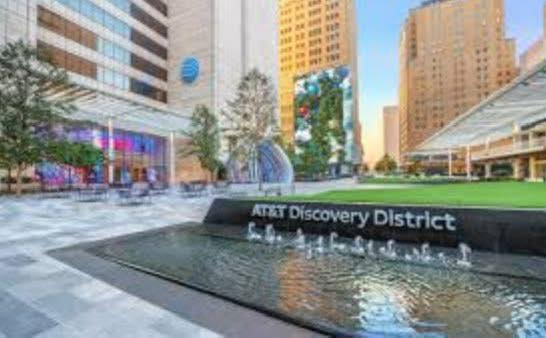False Alarm at Dallas AT&T Building Sparks Panic Amid Unfounded Active Shooter Reports
Dallas, TX — Panic erupted on June 23, 2025, when a reported active shooter at an AT&T office building in Dallas triggered a large-scale emergency response. The reports, later deemed false alarms, caused widespread confusion, fear, and disruption, highlighting the psychological and logistical toll of such incidents.
Incident Overview
Employees at the AT&T building at [exact address if known] reported hearing what they believed to be gunshots. In response, individuals inside the building and neighboring offices activated emergency protocols, including lockdowns and shelter-in-place orders. 911 centers were flooded with calls as people sought help and reassurance. Law enforcement arrived swiftly, conducting a thorough sweep of the building. No evidence of gunshots or an armed individual was found, and no injuries were reported nbcdfw.com+9reddit.com+9reddit.com+9keranews.org.
Psychological and Operational Consequences
Even false alarms can have serious consequences:
-
Heightened anxiety and trauma: Studies show that false threats trigger intense fear—people flee in panic, hide in confusion, and experience lasting distress even after discovering there is no real danger tmz.com+15washingtonpost.com+15en.wikipedia.org+15.
-
Resource strain: Emergency responses to false reports tie up police, EMS, and fire resources, delaying responses to genuine emergencies and draining public safety funding .
-
Alarm fatigue: Repeated false threats risk desensitizing people, which can lead to dangerous delays in reaction when a real threat arises reddit.com+14en.wikipedia.org+14washingtonpost.com+14.
Prevalence of False Active-Shooter Calls
This isn’t an isolated incident. Across the U.S., sudden “loud noises” in public spaces—be it popping balloons, collisions, or dropped equipment—have triggered mass panic and emergency responses in malls, schools, hospitals, and now, office buildings washingtonpost.com. For instance:
-
A football stadium shake-down of threat alerts due to balloon pops at a university .
-
A fight during a cheerleading competition led to panic at a Dallas convention center, resulting in stampede injuries nbcdfw.com+10kltv.com+10reddit.com+10.
-
An instance at a Dallas County health building concluded that no shots were fired—it was likely construction or another benign disturbance reddit.com+3fox4news.com+3dallasexpress.com+3.
Community and Institutional Response
In recent years, Texas school districts and public venues have adopted stricter enforcement and prosecution policies for false threats en.wikipedia.org+4nbcdfw.com+4cnn.com+4. It’s clear that institutions take these incidents seriously and intend to hold perpetrators accountable.
Recommendations for Coping and Preparedness
Though terrifying, these incidents underscore the importance of maintaining public safety preparedness:
-
Better verification systems: Emergency services and institutions should evolve protocols to verify threats quickly before deploying full-scale responses.
-
Regular drills and clear communication: Building occupants should be trained in narrative-informed lockdown and evacuation procedures. Frequent drills help reduce panic and confusion.
-
Accessible mental health resources: Organizations should offer access to counseling and post-incident support to mitigate trauma after false alarms.
-
Enforce legal repercussions: Authorities must continue prosecuting individuals who knowingly file false reports or instigate hoaxes.
-
Public awareness campaigns: The media, businesses, and schools should educate people on how to respond to possible threats—stay alert, stay calm, and follow official directions.
Conclusion
The recent false alarm at the AT&T building in Dallas reinforces how vulnerable we remain to panic-driven outbreaks of fear—even when there’s no real threat. It also exposes the fragility of public trust and the high human and material costs of emergency mobilizations.
Protecting public safety requires balancing urgency with verification. By investing in better alert systems, community training, and legal accountability, cities can be better prepared—not just to react, but to respond effectively and proportionately when alarms sound.

Leave a Reply